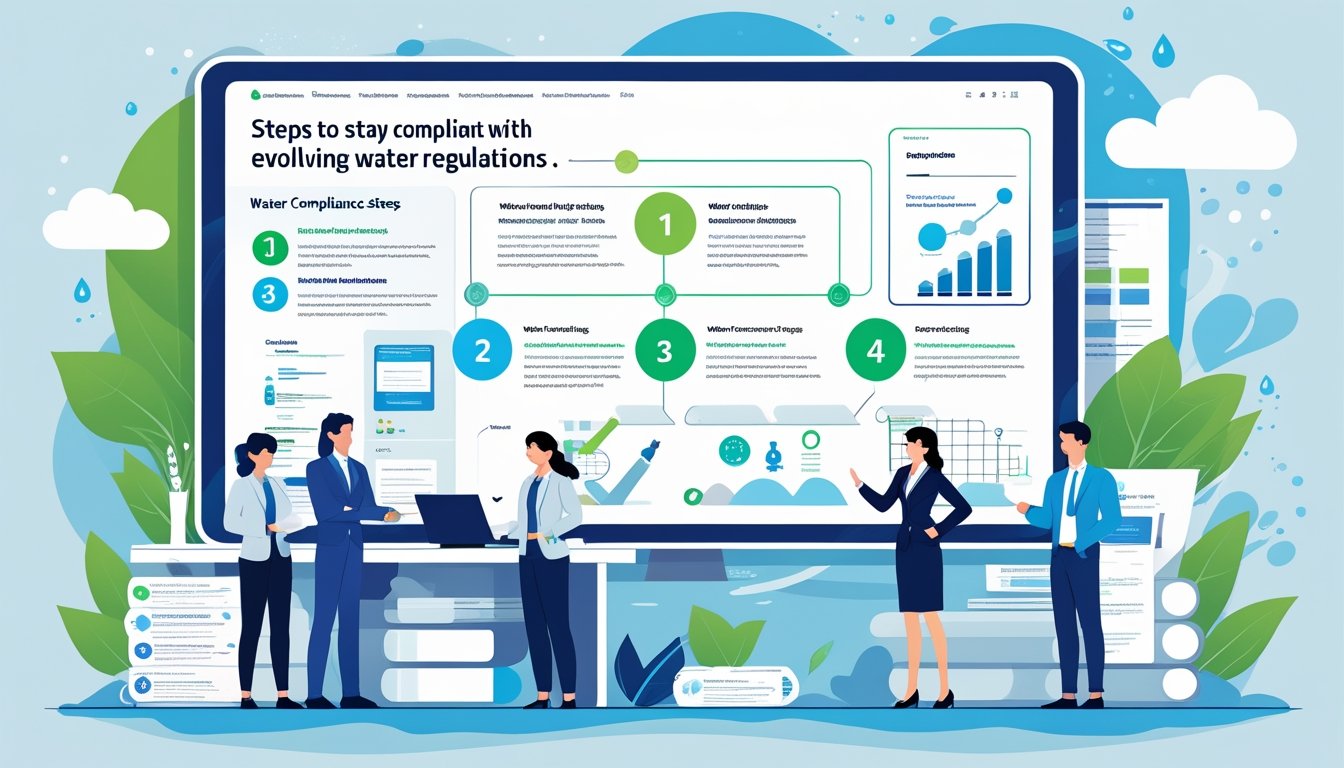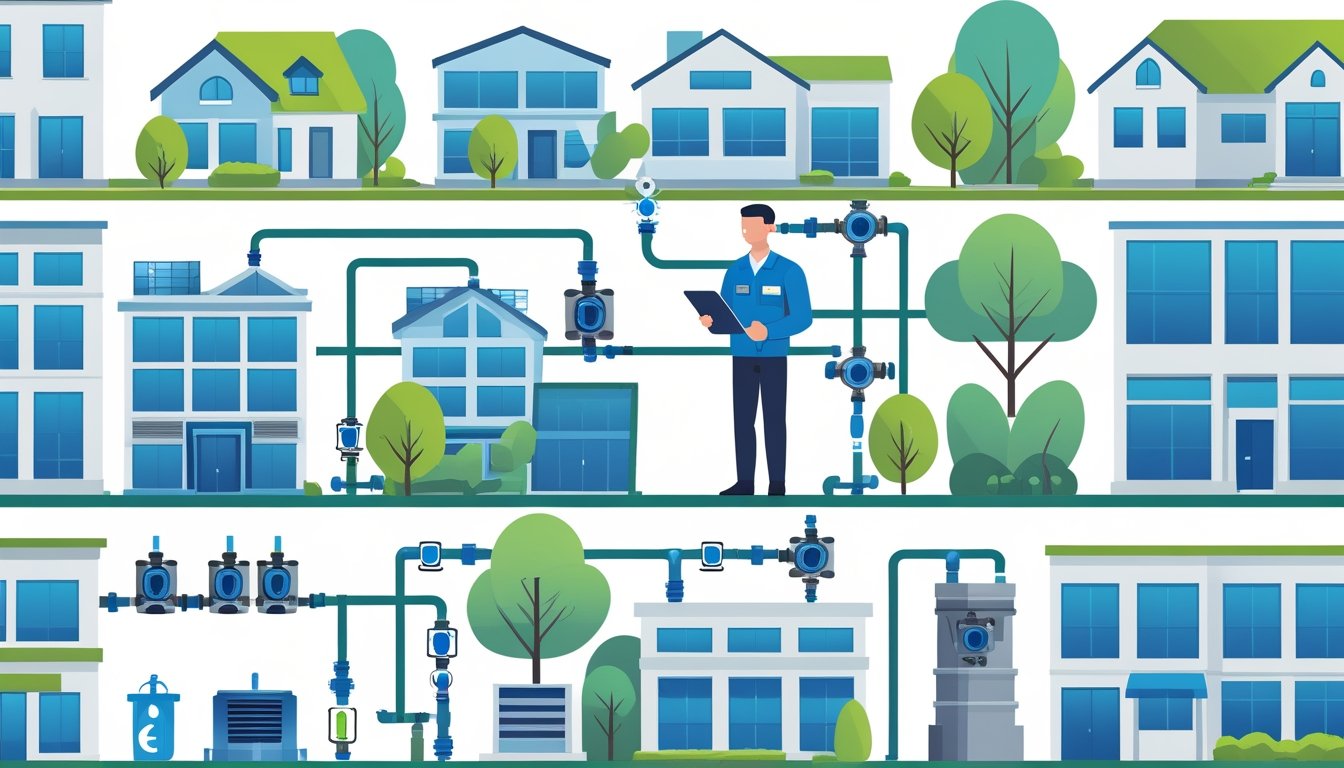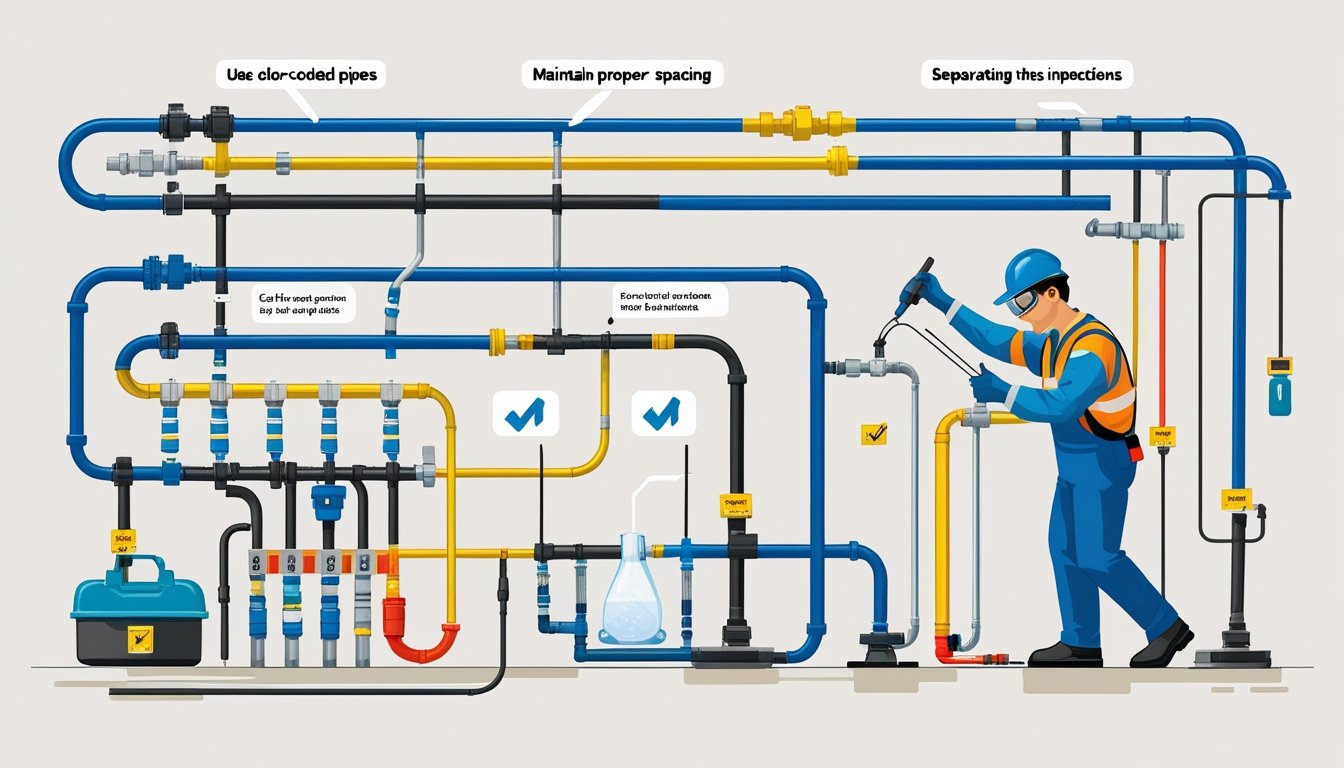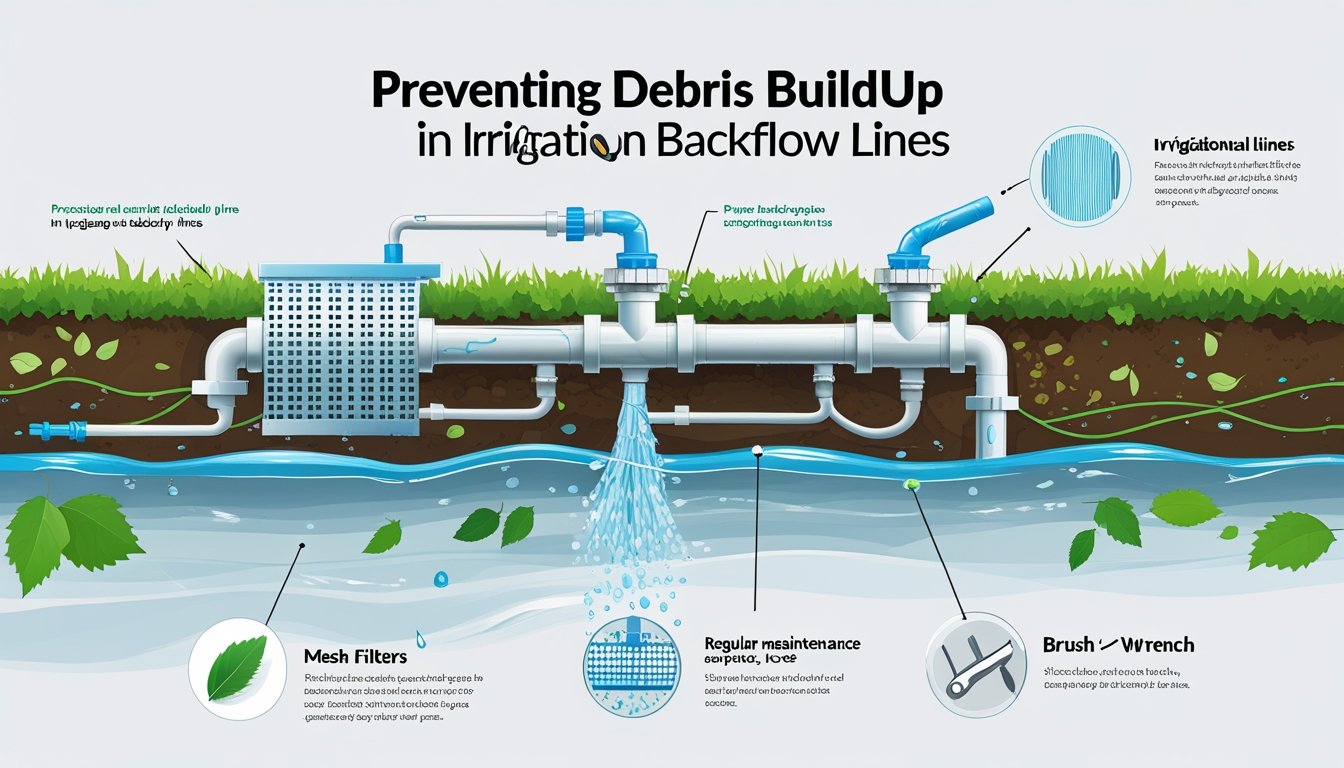As a property owner, you may wonder about the necessity of a backflow preventer for your plumbing system. The answer is yes; you do need a backflow preventer to protect your water supply from contamination. This essential device ensures that water flows in one direction only, preventing harmful pollutants from entering your clean water system.
Installing a backflow preventer is not just a regulatory requirement in many areas; it also safeguards your health and the well-being of your community. At Pacific Backflow, we have been dedicated to protecting water supplies in San Diego County for nearly half a century, providing reliable testing, repair, and installation services to ensure your backflow system operates effectively.
Neglecting this critical component can result in serious health risks and costly damages. By understanding the importance of backflow prevention, you help maintain a safe water supply for yourself and your neighbors. Trust in Pacific Backflow to help you stay compliant and secure with our experienced services.
Understanding Backflow Preventers
A backflow preventer is a vital device designed to stop the reversal of flow in water systems. This reversal can lead to contamination of drinking water from undesirable sources.
Backflow preventers are crucial in many settings, particularly in residential and commercial properties. They work by creating a physical barrier that prevents dirty water from entering the clean water supply.
Key Functions of Backflow Preventers:
- Contamination Prevention: Keeps your drinking water safe from pollutants.
- Regulatory Compliance: Ensures your system meets local water codes and regulations.
- Enhanced Safety: Protects public health by maintaining clean water sources.
Regular maintenance and testing are essential. Pacific Backflow provides reliable backflow testing to ensure your system is compliant and functional.
Types of Backflow Preventers:
- Reduced Pressure Zone (RPZ): Ideal for high-risk situations.
- Double Check Valve Assembly: Common in residential areas.
- Pressure Vacuum Breaker: Suitable for irrigation systems.
Failure to install a backflow preventer can put your health at risk. Contaminated drinking water can cause serious health issues. If you suspect your device is malfunctioning, prompt service is crucial.
Pacific Backflow offers comprehensive solutions, including installations, repairs, and emergency services. Protect your drinking water by ensuring your backflow preventer is functioning properly.
Types of Backflow Preventers
Understanding the different types of backflow preventers is crucial for maintaining a safe water supply. Here are the most common types you should know about:
- Double Check Valve Assembly (DCVA)
This device consists of two check valves in series. It is suitable for low-risk applications and prevents backflow effectively. - Reduced Pressure Zone Assembly (RPZA)
An RPZA features a pressure differential relief valve. It is ideal for higher-risk applications and provides robust protection against backflow. - Pressure Vacuum Breaker (PVB)
This device utilizes a spring-loaded valve that opens to the atmosphere to break the siphon effect. It is often used in irrigation systems. - Hose Bib Vacuum Breaker
A simple device that attaches to a hose bib, it prevents backflow when hoses are submerged in contaminated water. - Air Gap
This is a physical separation between the water supply and potential contaminants. It's considered one of the most effective backflow prevention methods.
Regular testing and maintenance of these preventers are essential. For reliable service and compliance with local regulations, consider partnering with Pacific Backflow. They offer comprehensive backflow testing, repairs, and installations throughout San Diego County.
Importance in Drinking Water Systems
A backflow preventer is crucial for maintaining the safety of drinking water systems. It ensures that water flows in one direction only, preventing contamination from polluted sources.
Key Reasons for Backflow Preventers:
- Contamination Prevention: Backflow can introduce harmful substances into the drinking water supply. A backflow preventer stops this risk effectively.
- Public Health Protection: By preventing backflow, you protect not only your water supply but also the drinking water of your neighbors.
- Regulatory Compliance: Many jurisdictions require backflow preventers to meet safety standards in drinking water systems.
How Backflow Occurs:
- Sudden drops in pressure in the drinking water system can cause water to flow backward.
- This reversal can draw contaminants from non-potable sources into clean water lines.
By installing a reliable backflow preventer, you ensure a safe drinking water supply. If your system requires testing, Pacific Backflow offers comprehensive testing and maintenance services throughout San Diego County.
Regular maintenance helps keep your backflow preventer functioning properly. When problems arise, prompt repair services from skilled technicians can help maintain compliance and safety.
Investing in a backflow preventer is essential. It safeguards your health and the integrity of the entire drinking water system. Protect your water supply today by employing professional backflow services.
Backflow Preventers for Sprinkler and Irrigation Systems
In maintaining a safe and efficient water supply, backflow preventers are essential for sprinkler and irrigation systems. They prevent contaminated water from flowing back into your clean water supply, protecting your home and community.
Key Functions of Backflow Preventers:
- Prevention of Contamination: A backflow preventer ensures that harmful substances do not enter your drinking water.
- Compliance with Regulations: Many local codes require the installation of these devices in sprinkler systems to meet health and safety standards.
- System Efficiency: Properly functioning backflow preventers help maintain optimal pressure, ensuring that your irrigation system operates effectively.
Installation and Maintenance
Consider having your backflow preventer installed by professionals. Pacific Backflow offers expert installation and ongoing maintenance services throughout San Diego County.
Regular testing is crucial. Annual backflow testing can identify issues early. If repairs are needed, certified technicians can provide timely service to restore function and compliance.
Remember:
A malfunctioning backflow preventer can lead to severe consequences. Protect your investment by ensuring that your irrigation system is equipped with a reliable backflow prevention device.
Invest in your water security. Contact Pacific Backflow to properly install, test, and maintain your backflow preventers. Your community's safety starts with you.
Installation and Maintenance Guidelines
When considering a backflow preventer, proper installation is crucial. Make sure to install it in an accessible location, preferably away from potential flooding in the basement or near spigots and hose bibs.
Key Installation Tips:
- Position it above ground level.
- Ensure it meets the local water district codes.
- Use a qualified technician for installation to avoid compliance issues.
Regular maintenance is essential to ensure your backflow preventer operates effectively. Schedule annual inspections to test its functionality. If you need assistance, Pacific Backflow provides reliable testing services to ensure your system meets all regulations.
Maintenance Steps:
- Inspect the device regularly for leaks or damage.
- Clean any debris or obstructions around the unit.
- Replace worn parts as needed to maintain efficiency.
In case of malfunction, Pacific Backflow offers quick repairs or replacements. They adhere strictly to water district requirements, ensuring your system is both safe and compliant.
Lastly, protect your backflow device from vandalism or theft. Consider investing in a custom-fitted cage, which provides added security and peace of mind. Your water supply deserves the best protection; take action now to ensure safe and clean water flow.
Frequently Asked Questions
Understanding backflow preventers is crucial for maintaining safe water systems. Below are common queries regarding their necessity, installation, and purpose.
What are the requirements for installing a backflow preventer?
Installation requirements for backflow preventers typically depend on local plumbing codes and regulations. Generally, they need to be installed at specific points in the plumbing system, particularly where the water supply could be contaminated. Be sure to consult with a certified technician to ensure that your installation meets all applicable guidelines.
How can I determine if my residential property needs a backflow preventer?
If your property has any potential hazards, such as irrigation systems, swimming pools, or auxiliary water supplies, you likely need a backflow preventer. Local regulations often dictate specific conditions under which backflow prevention is necessary. It’s best to contact a professional for an evaluation of your property.
Is a backflow preventer necessary on a garden hose or irrigation system?
Yes, backflow preventers are often required for garden hoses and irrigation systems to prevent contaminants from entering the potable water supply. This is essential for maintaining the safety and quality of your water. Consulting with experts like Pacific Backflow can help ensure your systems are compliant.
Can you explain the purpose and function of a backflow preventer?
A backflow preventer is designed to prevent contaminated water from flowing back into the clean water supply. It uses mechanical devices that allow water to flow in only one direction. This function is vital for protecting public health and ensuring safe drinking water.
What locations mandate the use of backflow preventers?
Backflow preventers may be mandated in various locations, including residential homes, commercial buildings, and industrial facilities, especially where there is potential for contamination. Local health and safety codes typically specify these mandates. Always check with your local water authority for specific requirements.
What are the guidelines for backflow preventer installation?
Guidelines for installing backflow preventers include proper placement, ensuring accessibility for testing and maintenance, and following local code requirements. Precise installation is key to effective operation. Engaging a qualified service provider, such as Pacific Backflow, can help ensure proper adherence to these guidelines.











